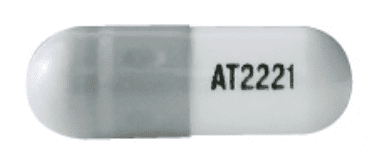Opfolda Disease Interactions
There are 4 disease interactions with Opfolda (miglustat).
Miglustat (applies to Opfolda) inflammatory bowel disease
Moderate Potential Hazard, Moderate plausibility.
The safety of treatment with miglustat has not been evaluated in patients with significant gastrointestinal disease, such as inflammatory bowel disease. Continued treatment of these patients with miglustat should occur only after careful consideration of the risks and benefits of treatment.
Miglustat (applies to Opfolda) peripheral neuropathy
Moderate Potential Hazard, Moderate plausibility.
Peripheral neuropathy has been reported in patients treated with miglustat. It is recommended to assess all patients receiving miglustat for peripheral neuropathy at the beginning and at 6 months interval of starting treatment. Caution should be instituted in patients who develop symptoms of peripheral neuropathy and cessation of therapy may be considered if appropriate.
Miglustat (applies to Opfolda) renal impairment
Moderate Potential Hazard, Moderate plausibility. Applicable conditions: Renal Dysfunction
Miglustat is substantially excreted by the kidney. The use of miglustat in patients with severe renal impairment is not recommended (CrCl < 30 mL/min). In patients with moderate renal impairment miglustat administration should be initiated at a dose of 100 mg once a day, and in those patients with mild renal impairment, it should be started at 100 mg twice per day.
Miglustat (applies to Opfolda) thrombocytopenia
Moderate Potential Hazard, Moderate plausibility.
Miglustat can cause a mild reduction in platelet counts. Monitoring of platelet counts is recommended, especially in patients with preexisting thrombocytopenia.
Switch to professional interaction data
Opfolda drug interactions
There is 1 drug interaction with Opfolda (miglustat).
Opfolda alcohol/food interactions
There is 1 alcohol/food interaction with Opfolda (miglustat).
More about Opfolda (miglustat)
- Opfolda consumer information
- Check interactions
- Compare alternatives
- Pricing & coupons
- Drug images
- Side effects
- Dosage information
- During pregnancy
- FDA approval history
- Drug class: miscellaneous metabolic agents
- Breastfeeding
- En español
Related treatment guides
Drug Interaction Classification
| Highly clinically significant. Avoid combinations; the risk of the interaction outweighs the benefit. | |
| Moderately clinically significant. Usually avoid combinations; use it only under special circumstances. | |
| Minimally clinically significant. Minimize risk; assess risk and consider an alternative drug, take steps to circumvent the interaction risk and/or institute a monitoring plan. | |
| No interaction information available. |
See also:
Further information
Always consult your healthcare provider to ensure the information displayed on this page applies to your personal circumstances.


